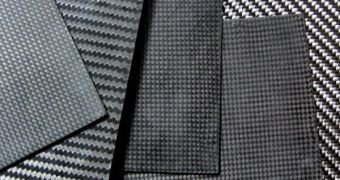A new type of vehicle armor developed by the British Ministry of Defense (MoD) is advertised to be among the strongest on Earth today, featuring a revolutionary design and ultra-resistant materials. Super Bainite, the name of the new steel-based armor, has holes in it, which may seem a bit contradictory at first, until you hear the explanation that UK authorities in charge of overseeing the project gave for this fact.
"You shouldn't think of them as holes, you should think of them as edges. When a bullet hits an edge, it gets deflected, and turns from a sharp projectile into a blunt fragment – which is much easier to stop. It doubles the ballistic performance and halves the weight," says Professor Peter Brown, of the Defense Science and Technology Laboratory (DSTL), from Porton Down in Wiltshire.
He and other UK officials added that the armor performed very well in live ammunition tests, fueling hopes that soon it could be implemented on a large scale within the British armed forces. The secret behind the effectiveness of this new material lies in the transformations the fine structure of steel undergoes when subjected to high temperatures.
A product of this type of process is bainite, an alloy that has been known since the 1930s. Super Bainite, the new material, is obtained by putting the steel through an additional phase, known as "isothermal hardening," which takes place at low temperatures. After heating the alloy at 1000 degrees Celsius, it is cooled at about 250 degrees and left to reach room temperature on its own. This hardens it considerably, offering just the degree of ballistic protection British representatives were looking for.
Kolsterising, an industrial process developed by Bodycote, is able to raise the hardness level of the surface of stainless steel to twice that of Super Bainite, while, at the same time, maintaining it ductile, which means that it can still be molded into various shapes without the alloy breaking.
"It's as hard as a ceramic and as ductile as a metal. It re-defines, really, what steel is capable of," concludes Brown.

 14 DAY TRIAL //
14 DAY TRIAL //